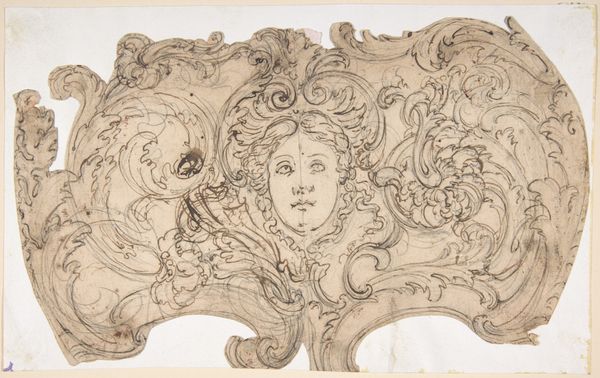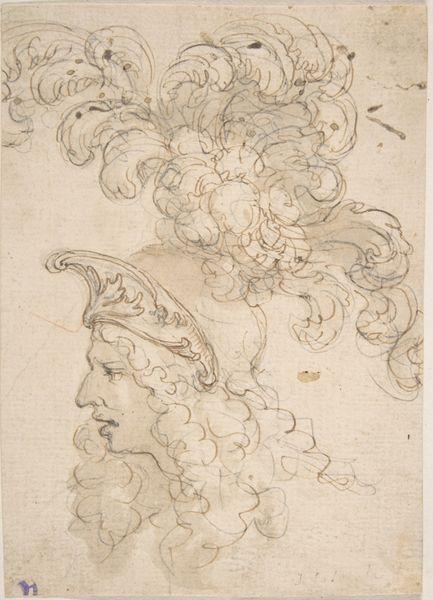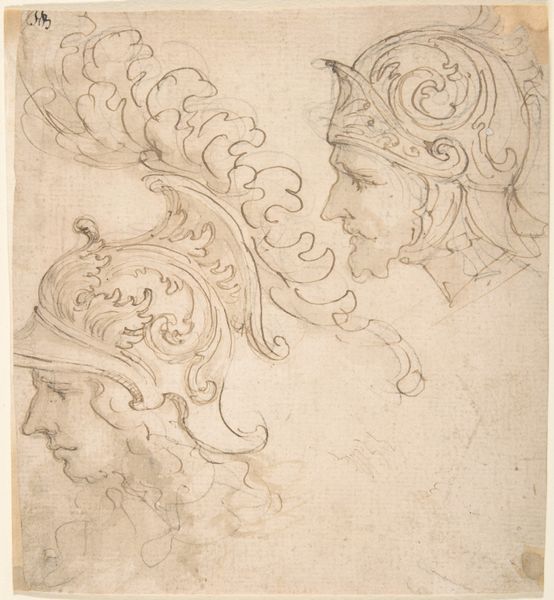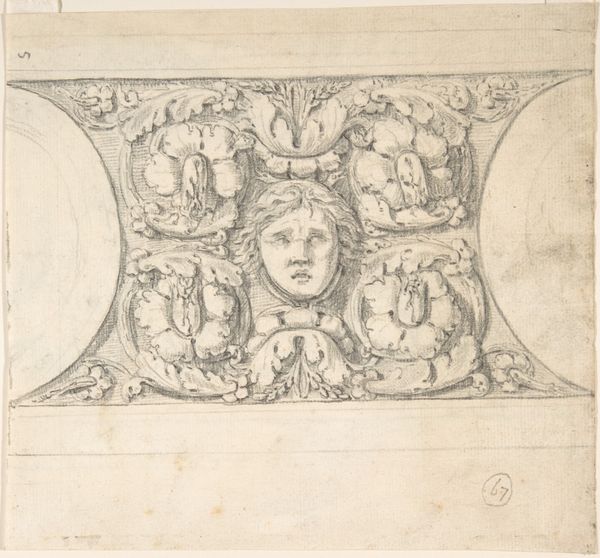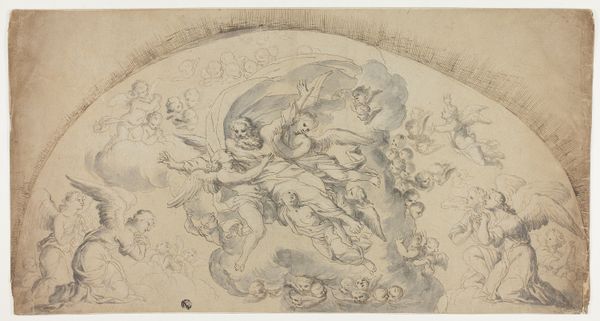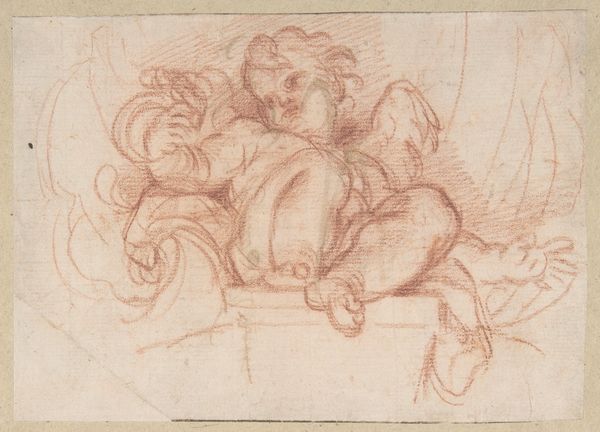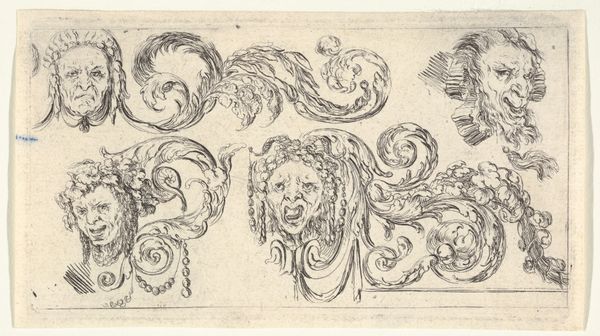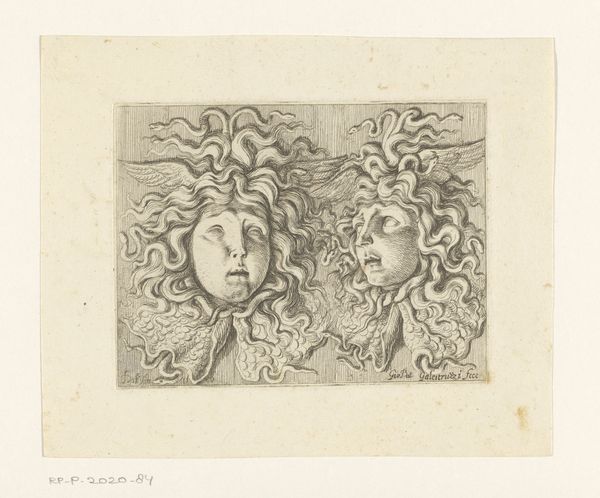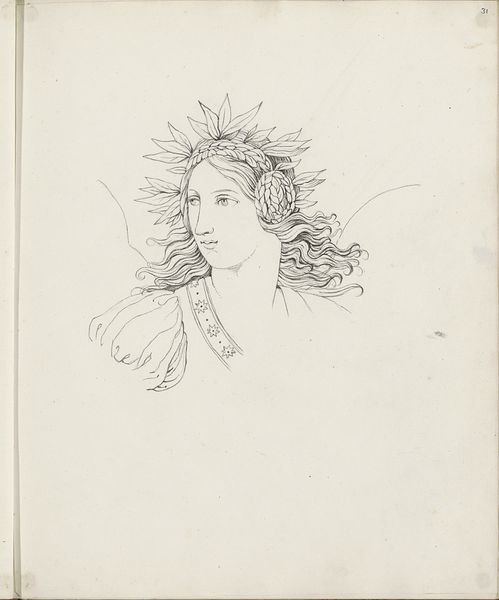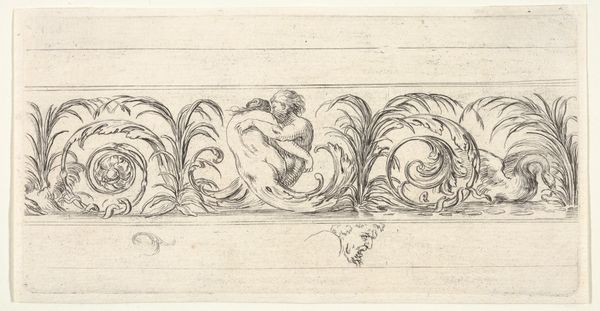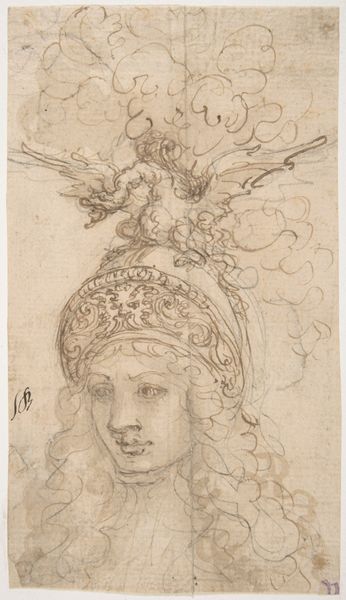
drawing, print, paper, pencil, chalk, charcoal
#
portrait
#
drawing
# print
#
classical-realism
#
figuration
#
paper
#
pencil
#
chalk
#
charcoal
#
history-painting
#
academic-art
Dimensions: 242 × 410 mm
Copyright: Public Domain
Editor: We’re looking at “After Carving with Medusa Head,” a drawing by Virgilius Solis the Elder. It’s undated, but rendered in pencil, chalk, and charcoal on paper. Medusa is framed here, almost softened. What do you see in this piece? Curator: I see a study in the power of symbols and their transmutation over time. The Medusa, typically a figure of terrifying female power, her gaze capable of turning men to stone, is presented here within a framework of classical motifs. Look closely – what surrounds her? Editor: I see… there appear to be some sort of classical ornamentation, possibly garlands. Curator: Precisely. Garlands, fruit, creatures— emblems of prosperity and abundance. But do they truly soften the image? Or do they serve to contain, to frame, and therefore control her power? Consider how often we see powerful female figures depicted only when mediated, contained within a symbolic order created by male artists and patrons. Editor: So you're saying even the way she's depicted here speaks to power dynamics? Curator: Absolutely. Medusa, even neutralized somewhat in expression, still carries the weight of her story, the fear of the feminine, and the consequences of transgressing patriarchal boundaries. The drawing becomes a fascinating site of tension: control versus untamed power, beauty versus monstrosity. This piece makes you question what is being amplified and what is being suppressed by the composition itself. Editor: That’s a perspective I hadn't considered. I was so focused on the aesthetic that I overlooked the cultural implications. Curator: The image continues to evolve with our perspective. The more we analyze, the more the artwork reflects not just historical symbolism, but also ourselves.
Comments
No comments
Be the first to comment and join the conversation on the ultimate creative platform.
